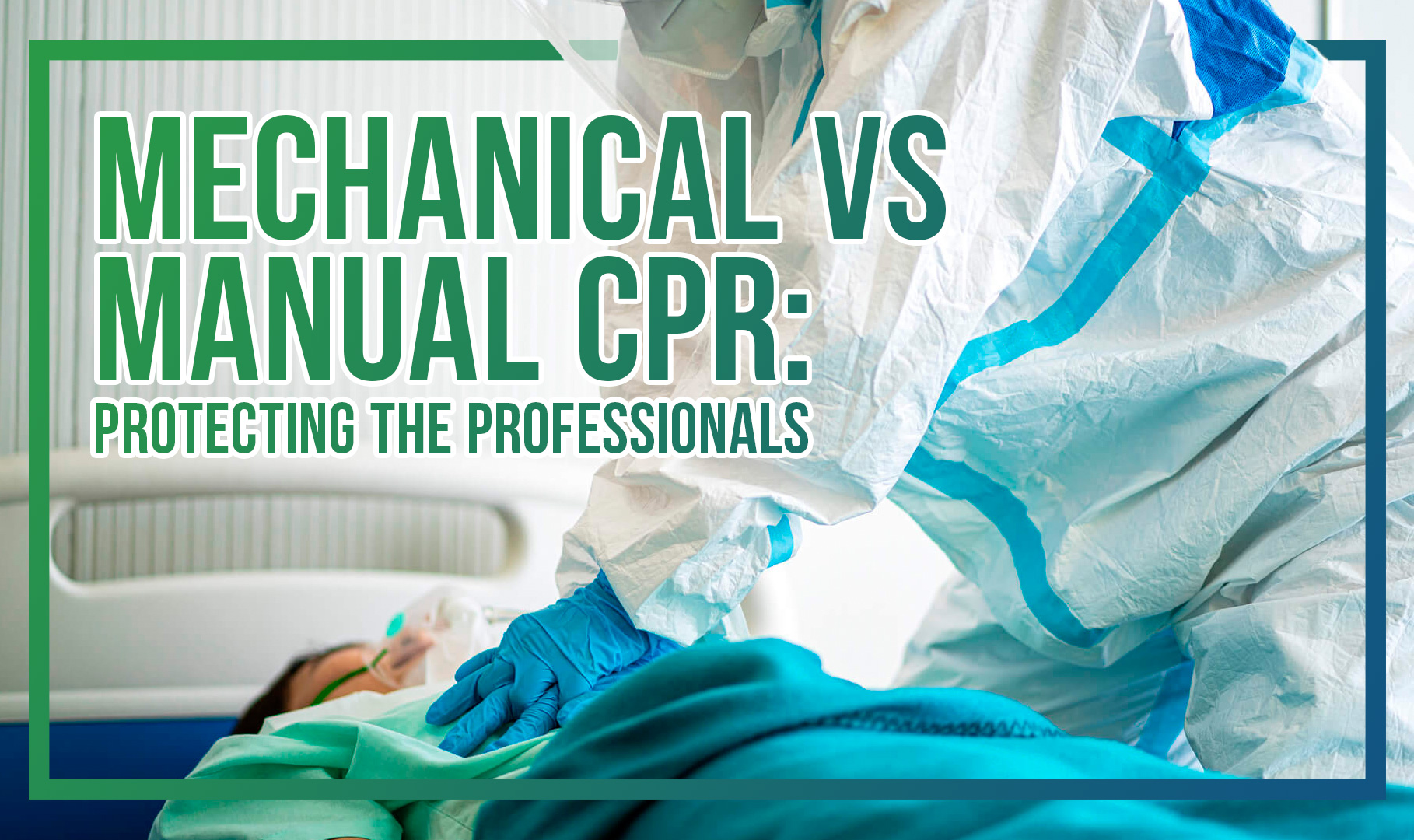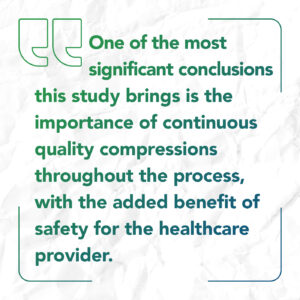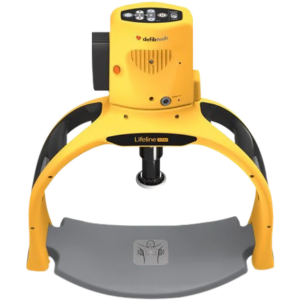Blog
Mechanical vs Manual Compressions: Protecting the Professionals

A 2020 study explored a less-intuitive but very real complication medical professionals face with the COVID-19 pandemic, specifically, the challenge of performing effective chest compressions while staying properly protected. Even a few years after the initial COVID-19 waves, we can still draw benefits from this study about Automated Chest Compression Devices (ACCDs). This study focused on the Defibtech Lifeline ARM and its quality of compressions compared to manual chest compressions and CPR Monitoring Devices.
 “The median chest compression depth using manual CC[Chest Compressions], CPRMeter, and LifeLine ARM varied and amounted to 40 (38–45) vs. 45 (40–50) vs. 51 (50–52) mm, respectively (p = 0.002). The median chest compression rate was 109 (IQR; 102–131) compressions per minute (CPM) for manual CC, 107 (105–127) CPM for CPRMeter, and 102 (101–102) CPM for LifeLine ARM (p = 0.027). The percentage of correct chest recoil was the highest for LifeLine ARM — 100% (95–100), 80% (60–90) in the CPRMeter group, and the lowest for manual CC — 29% (26–48).”
“The median chest compression depth using manual CC[Chest Compressions], CPRMeter, and LifeLine ARM varied and amounted to 40 (38–45) vs. 45 (40–50) vs. 51 (50–52) mm, respectively (p = 0.002). The median chest compression rate was 109 (IQR; 102–131) compressions per minute (CPM) for manual CC, 107 (105–127) CPM for CPRMeter, and 102 (101–102) CPM for LifeLine ARM (p = 0.027). The percentage of correct chest recoil was the highest for LifeLine ARM — 100% (95–100), 80% (60–90) in the CPRMeter group, and the lowest for manual CC — 29% (26–48).”
So what does this mean for you? Medical professionals are stretched thin and must wear protective equipment when rescuing or treating a patient, especially one who has or was exposed to COVID-19. Certain protective equipment can be cumbersome and affect the ability of the caregiver to provide chest compressions with maximum efficiency. The ARM can consistently give compressions at a precise rate and depth on a single battery charge for approximately an hour. The hot-swappable battery can be inserted in multiple orientations and operate while plugged into AC power, for long-term compressions without interruption.
 Another great benefit of the Lifeline ARM is the space it affords caregivers to maintain a healthy distance from the patient while the device compresses. The ARM can switch from pause-for-breath protocol to no-pause-for-breath protocol, depending on your organizational standards.
Another great benefit of the Lifeline ARM is the space it affords caregivers to maintain a healthy distance from the patient while the device compresses. The ARM can switch from pause-for-breath protocol to no-pause-for-breath protocol, depending on your organizational standards.
The study concluded with 35 medical students wearing protective suits (ProChem I F). This suit can repel organic and inorganic chemicals in high concentrations down to 1 μm in particle diameter. These suits, coupled with an FFP2 filter, goggles, a visor, and double nitrile gloves, acted as a control group of well-protected medical personnel resuscitating someone expected to have COVID-19.
The results of this test show the best chest recoil:
LifeLine ARM Systems — 100% (IQR 95–100)
CPRMeter — 80% (IQR 60–90)
Manual Chest Compressions — 29% (IQR 26–48)
One of the most significant conclusions this study brings is the importance of continuous quality compressions throughout the process, with the added benefit of safety for the healthcare provider. Safety is an increasingly primary concern for medical professionals, especially in light of recent pandemics. An Automated Chest Compression Device affords more space between caregiver and patient, greatly reducing the amount of particles and pathogens a caregiver is exposed to.
This unit is tailor-made to fulfill protocols for various medical requirements and practices. The ARM can provide continuous compressions or allow pauses for breaths, whichever the healthcare professional deems necessary. To ensure the protocol is followed, the device also chirps and flashes an LED between compressions to alert for breaths.
Learn more about the Lifeline ARM automated chest compression solution here. For specific questions about the device, contact us at salessupport@mmemed.com or call us at 866-417-2546.
Citation: Malysz M, Dabrowski M, Böttiger BW, Smereka J, Kulak K, Szarpak A, Jaguszewski M, Filipiak KJ, Ladny JR, Ruetzler K, Szarpak L. Resuscitation of the patient with suspected/confirmed COVID-19 when wearing personal protective equipment: A randomized multicenter crossover simulation trial. Cardiol J. 2020;27(5):497-506. doi: 10.5603/CJ.a2020.0068. Epub 2020 May 18. PMID: 32419128; PMCID: PMC8078983.
